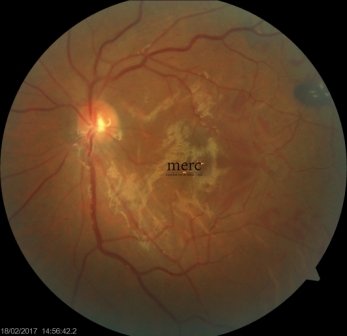Epiretinal Membrane Definition:
An epiretinal membrane (ERM) refers to the development of a thin sheet of tissue or a thin film developing over the central area of the retina called the macula. In the early stages, it is a barely visible and called cellophane maculopathy. In the late stages, it may cause severe wrinkling of the macula and is referred to as a Macular Pucker.
Epiretinal Membrane Symptoms:
Early membranes (cellophane) are asymptomatic and usually detected incidentally on a routine checkup. As the membranes get worse patients complain of distortion of vision or wavy vision. In late stages, there can be the severe visual loss.
Epiretinal Membrane Diagnosis:
Epiretinal can be easily diagnosed by a retinal specialist on clinical examination. Tests are needed to find out how severe the ERM is. A retinal scan called the OCT is usually required for this. This scan helps the retinal doctor to see how severe is the membrane. Based on this scan the retinal surgeon may advise surgery.
Epiretinal Membrane Treatment:
ERMs either remain the same for years or grow very slowly. Also, the majority of patients with ERM do not have any symptoms. Most of the time your retina doctor may not advise any treatment for such ERMs. Periodic checkups are all that may be required.
ERM peeling surgery: in a few patients, ERMs grow big enough to produce a significant impact on vision. It is these patients who need surgery. These membranes are usually removed by sutureless microincision vitreous surgery (MIVS) followed by removal of the membrane with precision.


